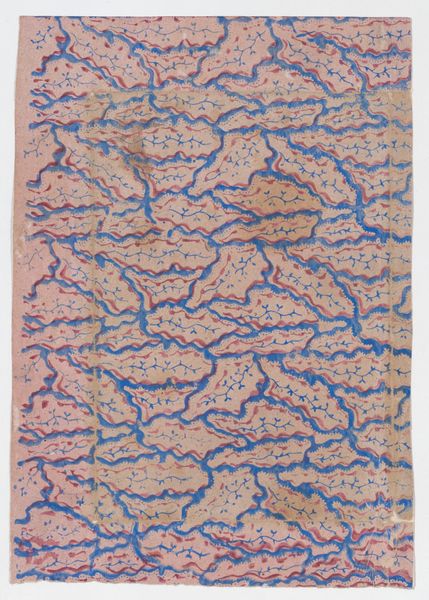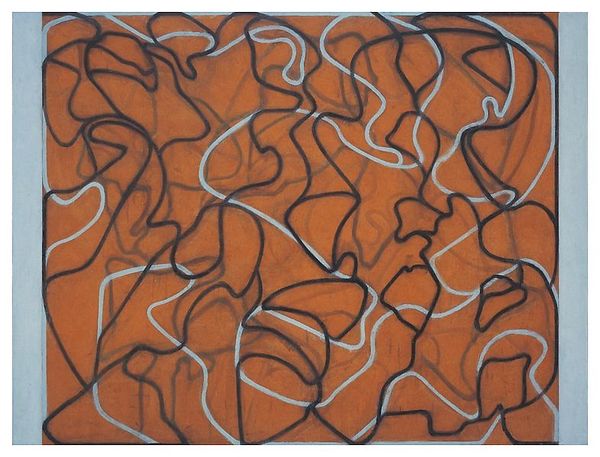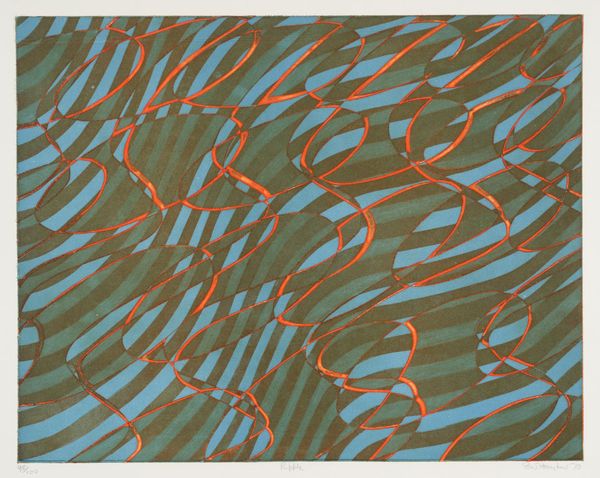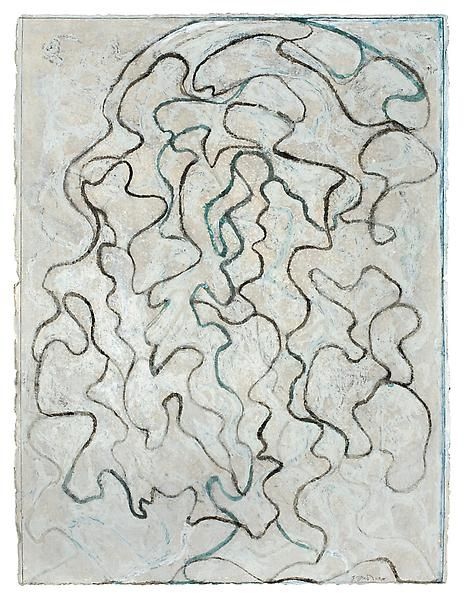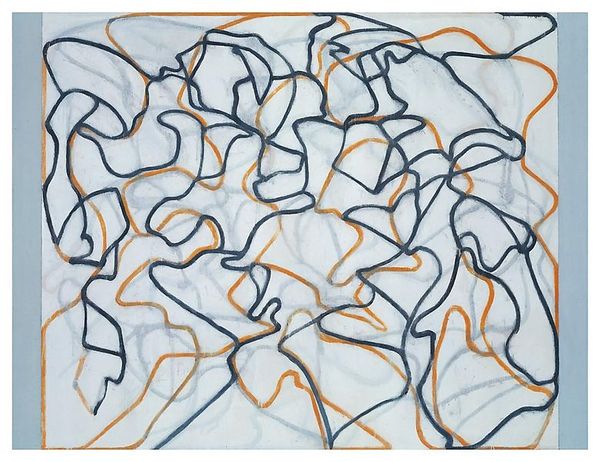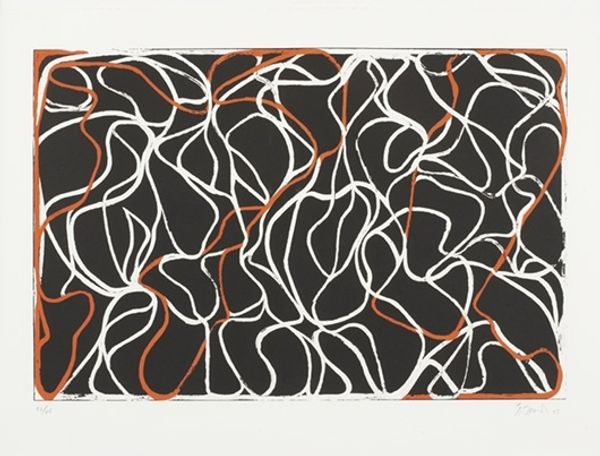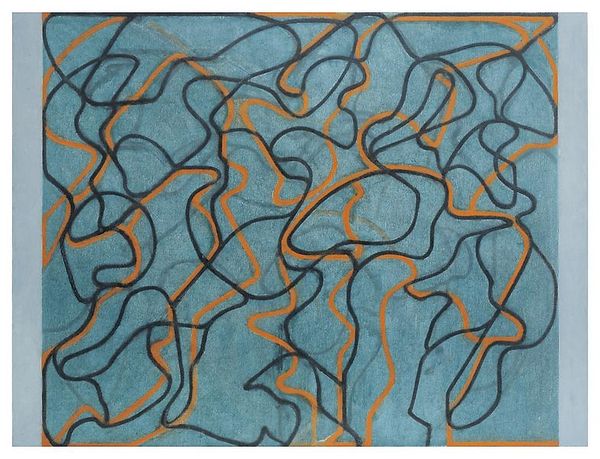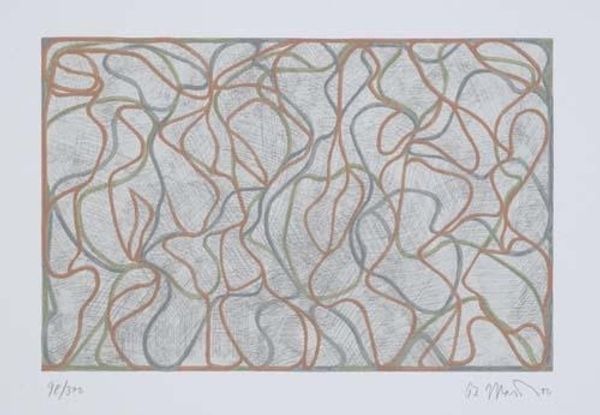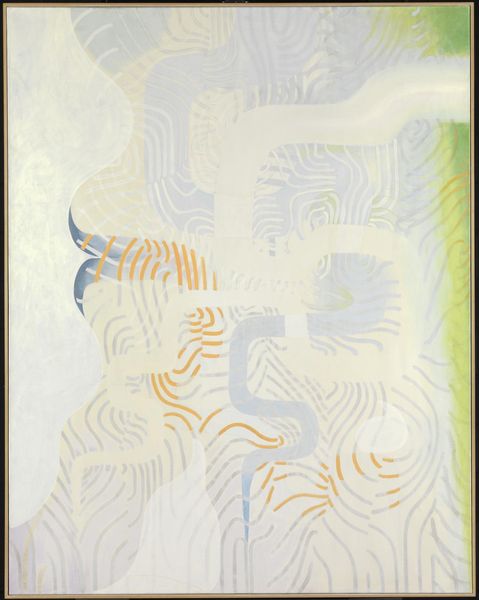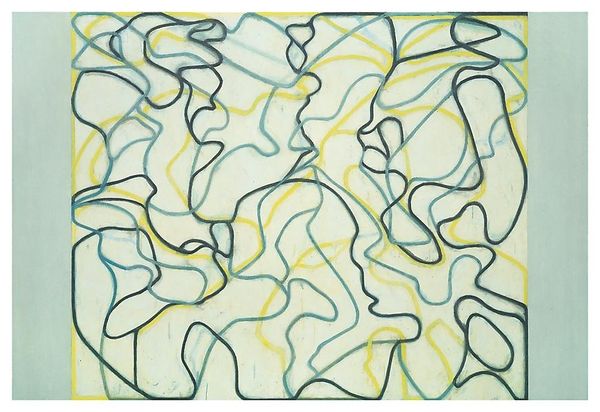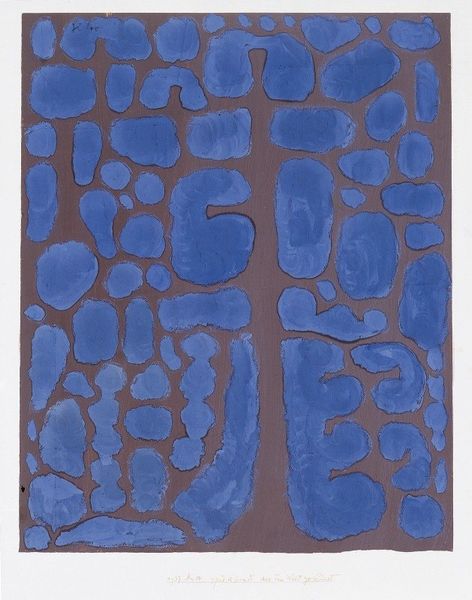
Copyright: Brice Marden,Fair Use
Curator: Marden's 2011 painting, titled "Polke Letter," presents such a striking and understated composition in mixed media. What is your first reaction? Editor: A kind of quiet chaos. The looping lines against that warm, almost fleshy ground create a sense of organic entanglement. I’m curious about this… letter. Curator: Letters as a form of encrypted communication, of revealing and concealing, I wonder what traces Marden might be channeling. He creates these webs of calligraphic lines, often alluding to classical forms while simultaneously pushing abstraction to its limit. Editor: Absolutely, and Brice Marden had his first solo exhibition in 1963. How did galleries react to this exploration of pure form so closely echoing abstract expressionism yet completely distinct? What sort of statements was the artist trying to make in his 20s that reverberate in a work like “Polke Letter,” from so many years later? Curator: Perhaps he saw his abstract language as a means of bypassing the specific, connecting to something deeper. Notice how the painted lines create both form and void, suggesting that what's unseen is just as crucial as what is present. Like symbols unearthed, demanding we search for meaning. Editor: The use of repetitive loops seems significant, though the overall composition manages to sidestep a formal visual pattern. What historical symbols are repeated in this artwork to inform and instruct its public? Curator: It’s like a coded message, perhaps addressing themes of time, memory, and our shared cultural vocabulary. Editor: A painting echoing forward with both art history and lived-human history embedded as both its structure and subtext. This “Polke Letter” feels deeply indicative of its era: Modern yet laced with symbols for our future readings. Curator: Indeed. A perfect closing meditation on a piece that intertwines art, history, and our persistent search for shared meaning across time.
Comments
No comments
Be the first to comment and join the conversation on the ultimate creative platform.
